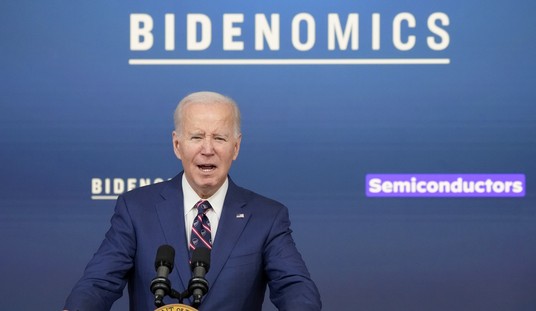The other day I tweeted something about Sen. Cruz’s strategy to defund Obamacare and a friend tweeted back, saying that Republicans need to do more than oppose Obamacare — they need to propose alternatives. Of course, this is true, though it’s not a completely fair criticism. It’s not that Republicans haven’t proposed any solutions, rather, they have communicated their ideas poorly. Instead of succinctly communicating the benefits of free-market, consumer driven solutions to the individual and the family, Republicans often focus more on how their ideas will reduce costs or make the market more competitive — as if they are more concerned with helping the market or the national debt than the individual.
One example is the concept of Health Savings Accounts (HSA), which are tax-advantaged savings plans available to individuals enrolled in low-premium, high-deductible health insurance plans. Employers love them because they help to rein in costs and many families find that they cost less than traditional insurance plans.
But they’re hard to explain.
Sometime during the long night of Sen. Ted Cruz’s speechibuster®, Sen. Rand Paul made some remarks (in the form of a question, as required by the Senate rules) about HSAs:
Why are the health savings accounts important? Because you can save money tax-free, you can carry it over from year to year, and then you can buy higher deductibles. So contrary to what people think, it may be counter-intuitive to some people, the way to fix health insurance is to have higher deductibles, because what does that mean? Cheaper insurance. You want cheaper and cheaper insurance. As you have higher deductibles, you have cheaper insurance. When you have cheaper insurance, you have all this extra money that you can use to pay for day-to-day health care. When you do that, what happens? You drive the price of health care down. I know that is exactly right. As you increase deductibles, as you get the consumer involved in health care, your prices go down.
May I suggest that when you’re trying to promote an idea or market a policy, you generally want the reaction to be something along the lines of, “It sounds good on paper, but what’s the catch?” or “That sounds too good to be true!”
Instead, I suspect a lot of Americans hear the words “savings” and “high deductible” and tune out everything else they hear about the subject. Just the name, Health Savings Account, is enough to scare many people away from HSAs without really understanding how they work. CNN Money recently reported that 76% of Americans live paycheck to paycheck and 46% have less than $800 in savings, so when they are introduced to a healthcare reform idea that sounds like it will require them to pay for their medical expenses with their own savings, people (understandably) balk.
Sen. Paul’s remarks came late at night and he could be forgiven for not clearly explaining how HSAs work, especially since his purpose was more to give Sen. Cruz a break than to be an apologist for HSAs. But the truth is, Paul’s explanation is fairly close to the standard way politicians and policy wonks describe HSAs. The American Healthcare Reform Act, recently released by the Republican Study Committee (RSC) explained their proposal for HSAs this way:
In addition, this bill will expand access to and allowable expenses for health savings accounts (HSAs) [and] increase the maximum allowable contribution into HSAs.
This description (included in a 2-page summary of the proposal) fails to communicate any of the benefits of HSAs and focuses on “contributions” and “savings.” The RSC plan also emphasizes tax savings, “For example, a family with a $15,000 plan would receive an additional $5,000 tax deduction.”
As a nation, we’ve come to view insurance as a way to protect us from as many out-of-pocket costs of our medical care as possible. We now accept the many restrictions imposed upon us by managed care and HMOs because, despite the high premiums, the costs are predictable and we don’t really have to deal with the realities of how much things actually cost. Indeed, with many HMO plans, patients pay their small co-payment for office visits and never see the actual bills. The third party payer — the insurance company — deals directly with the doctor, shielding the patient from all that financial unpleasantness.
So it’s understandable that, when introduced to HSAs, many people think they sound risky and very costly. When you have no savings, a plan with a high deductible that requires a savings account has little appeal. When you don’t pay any taxes (or you pay very little), a $5,000 tax deduction does little to soften the blow. The benefits and cost savings to the consumer get lost in the weeds of the flowcharts explaining the plans.
In fact, that’s how I viewed them until I took the time to sit down and figure out how they worked. For several years, my husband’s employer had been pushing HSAs, trying to steer employees away from the other, higher-cost options they offered for health insurance. We had been fairly happy with our HMO plan, but rising prices and diminishing covered services finally forced us to weed through the details of the plan. To our surprise, the high-deductible HSA turned out the be a better deal than a tradition HMO or PPO plan and we’ve been enrolled in it for the past two years.
There are two aspects to our plan — the insurance portion and the savings portion. We pay 20% of the cost of the medical plan and my husband’s employer pays the rest, which for us, comes to around $175/month for a family of four. Preventive care is covered at 100%, including preventive drugs. Our deductible is fairly high — $1500/individual, $3000/family. Until we satisfy our deductible we pay 100% of all our non-preventive medical expenses. After the deductible is satisfied, the insurance kicks in and pays 80% of the costs.
At first, that high deductible sounded intimidating. We were used to spreading the costs of our medical expenses over the course of a year through a high monthly payment (around $450/month). But the savings aspect of the plan helps to cushion the blow. My husband’s employer deposits $1000/year into our HSA. They also deduct $420 a month (pre-tax) from his pay (an amount we chose) and deposit it into the HSA. Instead of paying that money to the insurance company and never seeing it again, the money in the interest-bearing account is ours to use to pay toward deductibles, co-pays and other non-covered expenses (we have debit cards linked to the account to pay for the expenses). We decide how (or if) to use the money. Unlike flexible spending accounts, the balance rolls over at the end of the year. The out-of-pocket expenses are capped at $3000/individual, $6000/family (there’s also a cheaper plan that has higher out-of-pocket maximums) so there is a safety net to protect us from a year with high medical costs. The most we will pay out-of-pocket in a year is $6000 (equal to the amount we deposit combined with the employer’s $1000).
After calculating the high monthly payments and the increasing costs of services not covered by the HMO (not to mention the frustrations of dealing with authorizations, denials, etc.), we determined that we would actually pay slightly less for the HSA than we were paying for the traditional HMO. And if we have a year with low medical expenses, we get to keep any money left over at the end of the year (the idea is to encourage a nest egg for when we are older and our healthcare expenses rise). Unlike most traditional insurance plans, the HSA gives us an incentive to consider prices and contain costs when making medical decisions. Since it’s our money, we think about the actual price of a prescription or office visit rather than just the co-pays.
Indiana actually uses a type of HSA to cover uninsured low-income families that make too much money to qualify for Medicaid. Around 37,000 Indiana residents participate in the program, paying between 2% and 5% of their income, up to $92/month (around 11,000 will be kicked off the program and into the federal exchanges when Obamacare kicks in October 1st). “What we’re finding out is that, first of all, low-income people are just as capable as anybody else of making wise decisions when it’s their own money that they’re spending,” former Governor Mitch Daniels explained. “And they’re also acting more like good consumers. They’re visiting emergency rooms less, they’re using more generic drugs, they’re asking for second opinions. And some real money is starting to accumulate in their [health savings] accounts.” There’s a long waiting list to enroll in the program, which is capped by state law to contain the costs.
According to Fidelity Investments, HSAs are increasingly popular, with 8.2 million HSA plans opened in 2012, a number that is expected to rise 73 percent to 14.2 million by the end of 2015. However, a recent survey by Fidelity found that 65% of Americans don’t understand how they work.
If conservatives want to sell Americans on the benefits of HSAs, they’re going to need to figure out a way to explain them. For starters, they should jettison the word “savings” in the name — find a name that emphasises the benefits to the consumer rather than something perceived as punitive. And they need to be able to explain how an HSA works in a 30-second soundbite that highlights the advantages to the consumers while calming their fears about the risks of high out-of pocket expenses.
HSAs can and should be a part of free-market healthcare reform (assuming we’re not all forced into a single-payer system in coming years). People just need to be convinced that they won’t be worse off — and in fact may be better off — than they are in a traditional healthcare plan (or no plan), and therein lies the challenge.












Join the conversation as a VIP Member